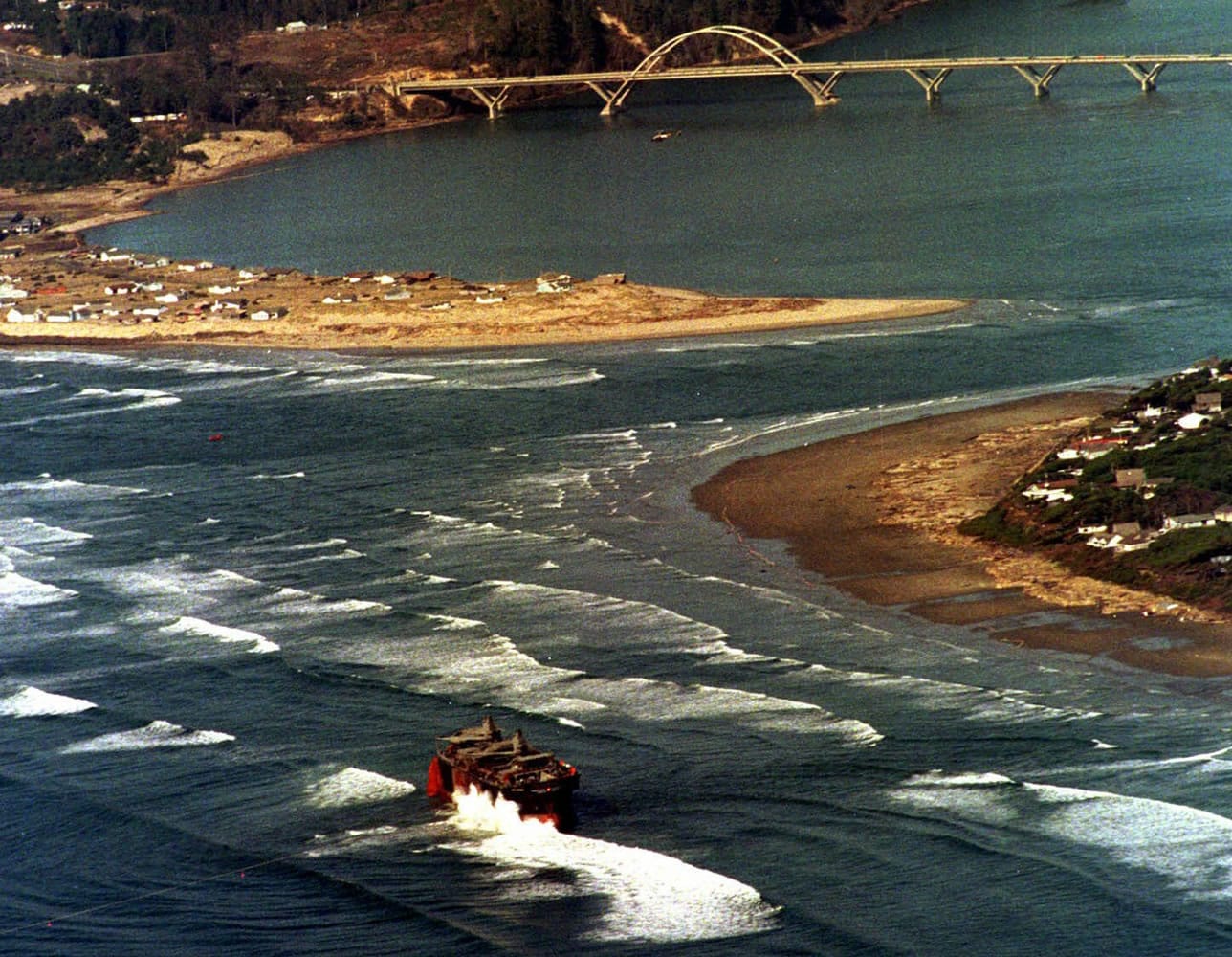COOS BAY — It has been 15 years since the wood-chip freighter New Carissa ran aground during a storm, off the north spit of Coos Bay, Ore., on Feb. 4, 1999. None of the 23 men on board were injured, but the vessel would soon belong to the ages.
Lou Sennick, chief photographer, at The World newspaper of Coos Bay, was on the front lines of the many futile efforts to get the ship off the beach.
“We put a lot of hours in that month,” he remembered. “Our publisher at the time said, ‘Do whatever you need to do, take whatever time you need.’ Whatever materials we needed we had, cause we sold a lot of papers. We printed extras but it wasn’t enough.
“… The first time I went out there, I was just amazed at the size of this ship that I’m used to see bobbing in the bay, so to speak, and all of a sudden there it is sitting on the beach. Things went a little crazy pretty quick.”
The ship resisted every effort to get it off the beach, even the spectacular attempt to burn off the fuel with the help of napalm.
“They announced that they were bringing in a Navy demolition crew to blow the fuel tanks and set them on fire,” Sennick said. “The writer (covering the story for The World) called me up, all excited, and kept repeating over and over again, ‘They’re going to blow up the ship, they’re going to blow up the ship,’ but not exactly in those words. I remember I didn’t believe what he was telling me, I had to ask him two or three times to repeat it to make sure I was understanding it right.”
It turned out to be another effort that just led to more problems. The intense heat weakened the structure and cracked the ship in half. They towed away one half, but it broke free in a storm and beached again in the Waldport area. It was pulled back away from Waldport, where a Navy destroyer tried, unsuccessfully, to scuttle the ship with explosives and artillery shells. A Navy submarine finally torpedoed it to the depths.
The stern section, meanwhile, continued to wedge itself deeper into the coastline in the winter weather and the harsh surf.
I started working with the local television station a year later, in February of 2000. It did not take long for me to get acquainted with the New Carissa story. For better or worse, I soon would feel just as stuck to that ship as it was with the north spit.
Countless stories came from that single wreck. Among them, the discovery that thousands of seabirds were found to have died, according to a Bureau of Land Management study, and oyster beds were heavily damaged, and lawsuits, that would drag on, were filed in both directions.
It would literally be on my mind almost every week for the next nine years.
Even if I tried to forget about it, it was near impossible to get everyone else to stop thinking about it too. Calls would come in from local residents, our parent station in Eugene, and even from other media outlets.
“Do you have anything new on the Carissa?”
“There was a big storm last month, did it do any damage to the Carissa?”
“What if we were to just leave it there as a tourist attraction?”
Sennick remembers the fear of potential lawsuits. “One (official) joked that they were afraid that one of the high school’s would get out there and put their logo on it … and hurt themselves.”
Soon though, nature was starting to make its case that vessel was not meant to be a permanent addition to the coastline.
As the years went by I saw bits and pieces of it rust into the surf.
In 2008, Titan Maritime came on board and figured out a way to dismantle it where it was.
In April, 2008, they brought in and hoisted two barges up out of the surf, on giant metal “legs.” A month later, Knutson Towing of Coos Bay would create a one-of-a-kind cable car tower to transport workers and supplies more than 900 feet out to the work site. (An unforgettable ride that would take about five minutes. It was a beautiful and yet unsettling experience, as I recall; though I’m forever thankful for the experience.)
By October, just shy of 10 years since it first wrecked, the last of the New Carissa disappeared from the Oregon coastline.



